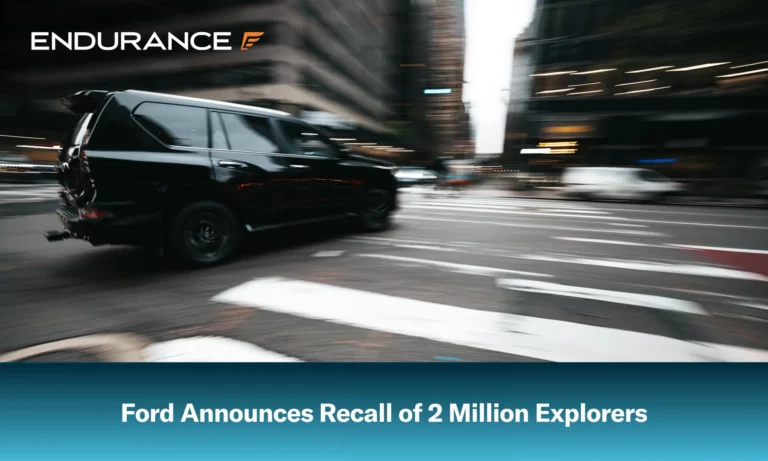2017 Detroit Auto Show Recap – What You Missed!

The North American International Auto Show, also called the Detroit Auto Show, is customarily THE most enormous stage where automakers make a big show of what they believe are the most vital cars and trucks. Things changed a bit for the current year as a HUGE rundown of carmakers—including Chrysler, Ram, Jeep, Lincoln, Mazda, Hyundai, Buick, Porsche, Jaguar, Land Rover and Acura—each took a pass on showcasing EVERY single new model at Detroit. All things considered, we saw some substantial heavyweights, including an all-new Toyota Camry, Honda Odyssey, and a totally re-designed F-150. Ford even dropped the news that an all-new Ford Bronco and Ranger will land in 2020. These are the cars, trucks and ideas that stood out as truly newsworthy.
The Best of the 2017 Detroit Auto Show
2018 Ford F-150
The F-150 is a solitary most critical item Ford makes. It’s been the smash hit vehicle in America since 1977, so even a gentle facelift is a major ordeal. Each rendition of the 2018 F-150 has another grille, headlamp group and mud guard. The new plan takes its cues from the Super Duty’s, and that is pretty cool.
Past the cosmetic adjustments here and there, the greatest news is the expansion of a Ford-outlined 3.0-liter turbo-diesel V-6. Ford isn’t prepared to unleash the specs on this engine yet, however it will be mated to Ford’s 10-speed automatic transmission (co-created by GM) and it is setting out to convey more than the 240 hp and 420 lb-ft of torque compared to Ram’s Ecodiesel. Ford at long last dumped the old suctioned 3.5-liter V-6 that inhabited the base of the lineup; a littler 3.3-liter unit with direct fuel infusion has its spot. The mainstream 2.7-liter Ecoboost has been updated with a port and direct fuel-infusion framework and Ford says it will produce better numbers in all cases.
A fuel-sparing programmed stop/begin framework will go with each powertrain. On the reliability front, the new F-150 will have pre-impact help with pedestrian discovery accessible. Like its opponents, Ford now offers a 4G LTE availability and a Wi-Fi hotspot. Look the 2018 model in Ford stores this fall.
2017 Nissan Rogue Sport
Automakers can’t produce new hybrids rapidly enough to fulfill the out of control interest for them, and the littlest ones appear to be the ones picking up real relevance. Thus, Nissan chose to include a Rogue Sport (named Qashqai somewhere else on the planet) opened just underneath the Rogue—the smash hit vehicle in Nissan’s lineup.
In the engine is a 2.0-liter four-cylinder with 141 hp and 146 lb-ft of torque matched to a CVT. The engine drives either the front wheels or each of the four. The Rogue Sport has space for five travelers (contrasted with 7 for the Rogue), and this new model has much slimmer accents. The Sport rides on a 2.3-inch shorter wheelbase, and is more than a foot shorter than the Rogue general. That decreases legroom by more than 4 inches and the most extreme payload space with every one of the seats collapsed changes by around 9 cu-ft.
The upside? Those clean measurements ought to make this ride much more athletic. The Rogue Sport utilizes a four-wheel free suspension to convey a couple of more grins on twisty streets, as well. The top SL model is the one to pick.
2018 Honda Odyssey
Of course, numerous families across America have proceeded to 7-and 8-traveler hybrids and SUVs. Yet, there is no more space-effective approach to move individuals and their stuff than a minivan, and Honda has been the smash hit in the class throughout the previous 7 years.
The all-new Odyssey surely doesn’t smash the minivan form, yet it’s a great looking development of the present van. This new Odyssey ought to move out with some zeal on account of a 280-hp 3.5-liter V-6 (up 32 drive over the old one) connected to a 9-speed automatic. Vans wearing a higher trim level are dealt with to another 10-speed automatic.
It’s the inside developments that truly matter on a minivan. Honda’s new Magic Slide seats permit the second column to slide forward and back (with youngster seats set up) in numerous imaginative positions, including expelling the inside seat. What’s more, Honda has some cool new tech on board to keep families glad. The CabinWatch highlight resembles a caretaker camera framework for the vehicle where front seat tenants can watch the children in back on the 8-inch dash show. The CabinTalk gives guardians a chance to converse with the children when there are wearing Honda’s back diversion earphones. Brilliant. Talking about back seat amusement, the Odyssey’s framework incorporates a 10.2-inch screen and 4G LTE Wi-Fi. What’s more, as some time recently, there’s an accessible in-vehicle vacuum more clean.
2018 Lexus LS 500
At the point when Toyota propelled the Lexus “luxury line” path in 1989, the LS 400 car was the main vehicle. It conveyed smoothness, craftsmanship and unwavering quality at a cost far underneath the lead German vehicles. The LS hasn’t been upgraded since 2007, yet this new fifth-era LS is maybe the most radical update in the model’s history.
The new vehicle depends on the idea LF-FC that made its North American introduction here in Detroit a year ago, and the generation LS remains consistent with that model’s look. Underneath that swoopy outside is another 3.5-liter twin-turbo V-6 that conveys 415 hp and 442 lb-ft of torque joined to a 10-speed automatic. The LS body and frame is around 200 pounds lighter than the old model. That, alongside this new powertrain, helps the LS achieve 60 mph in a sportscar-like 4.5-seconds.
The new LS has, surprisingly, a discretionary air suspension that ought to make this one of the best-riding vehicles in the class. The LS moves on a long 123-inch wheelbase (1.3 more prominent than the old model) and is fitted with just beautiful materials. The 28-way discretionary front seats warmth, cool and rub, and the discretionary power raise seats have a power hassock and Shiatsu kneading.
Audi Q8 Concept
Audi arrangements to create a generational rendition of this Q8 Concept in 2018. The dashing roadster like plan is the one cut of the hybrid fragment that has been lost from Audi’s lineup, keeping it from rivaling BMW and Mercedes-Benz.
The Audi Q8 depends on Audi’s substantial Q7 model and shares its 117.6-inch wheelbase. The idea is said to utilize a modified hybrid powertrain with a strong 516.3 lb-ft of torque. Furthermore, a hybrid Q8 will probably impart the top powertrain spot along to maybe a SQ8 superior model. Be that as it may, we expect the Q7’s 252-hp 2.0-liter four-cylinder and 333-hp 3.0-liter V-6 to make up the larger part of Q8 deals.
This idea surely has a smooth outline on account of that steeply slanted back window. Yes, that eliminates the payload volume (the idea has 22.2 cu-ft of space behind the back seat) and it implies there isn’t space for a third line of seats either. Be that as it may, regardless. In this sort of games hybrid, execution is much more imperative than common sense. On account of Quattro all-wheel drive and the wide track (likely discretionary) versatile air suspension, the Q8 ought to be heaps of fun.
2018 Kia Stinger
Kia is putting some fervor into the Detroit demonstration this year with its new Stinger car. The Stinger began as the GT concept vehicle uncovered in 2011. Kia isn’t known for building superior vehicles, so few thought a next-generation car could ever appear, yet here is an elite back drive (!) car worked to go up against significantly more costly (and set up) European models.
The Stinger is low-thrown, forceful, and rides on a 114.4-inch wheelbase, so it’s more drawn out than rides like the Audi A4 and BMW 3-Series. A 255-hp 2.0-liter turbocharged four-cylinder comes standard, however a 3.3-liter twin-turbo V-6 is discretionary with 365 hp. Both have an 8-speed automatic transmission. Kia says the all the more effective forms ought to hit 60 mph in 5.1 seconds and top out at 167 mph. The Stinger is accessible all-wheel drive, yet even back drive models get a standard restricted slip differential. What’s more, that name is out and out cool.
2018 GMC Terrain
The first Terrain offered a piece plan and restricted powertrain alternatives. This new second-era model is not just far more in vogue (with a clue of Nissan Murano in its side boards) yet offers some intriguing motor decisions—all turbocharged and four-cylinder. The standard motor is a 170-hp 1.5-liter turbo with a 255-hp 2.0-liter on the choices list. Both are combined to a 9-speed automatic transmission. We’d spend our cash on the new 137-hp 1.6-liter turbo diesel with 240 lb-ft of torque, which ought to convey uncommon efficiency and execution. At the highest point of the range sits the Denali, which includes 19-inch wheels, LED headlamps and bunches of chrome. The Terrain goes at a bargain this late spring.
2018 Chevrolet Traverse
Huge families cherished the Chevy Traverse, which gave close minivan-levels of extensive size in each of the three lines. In any case, following nine fruitful years as Chevy’s prime human mover, it was the ideal opportunity for an update. The ’18 Traverse looks trim and jazzy certainly. It imparts a stage to the GMC Acadia which made its presentation here a year ago. In any case, the Traverse rides on a broadened 120.9-inch wheelbase—longer even than the active model. Furthermore, that implies there’s a lot of room inside.
Most Traverse models will utilize another 305-hp 3.6-liter V-6 mated to a 9-speed automatic. Legitimately prepared, these can tow a 5,000-pound trailer. A game RS trim will offer a 255-hp 2.0-liter turbo. This motor is down on energy to the V-6 in any case, more critically, it produces 295 lb-ft of torque—36 more. The top High Country trim maximizes the security and extravagance with cowhide seating, cleaned 20-inch wheels, a power collapsing third column seats and an extraordinary twin-grip all-wheel drive framework.
Infiniti QX50 Concept
Infiniti’s radical 2003 FX charted a course for other sporty crossovers to follow. This QX50 Concept looks to bring that excitement back to Infiniti. It looks good, and it points closely to the direction of the next production QX. That model should incorporate Infiniti’s VC-Turbo (variable compression) four-cylinder engine that can infinitely vary its compression (from, say, 8:1 to 14:1) to suit power and fuel economy needs. Infiniti says this engine can improve fuel economy up to 27 percent over a V-6 and can prove to be a viable alternative to more expensive hybrid and diesel technology.
2018 Audi SQ5
The new Audi Q5 goes to the U.S. just a single route: with a 2.0-liter turbocharged four-cylinder and a steel spring suspension. That is fine for generally Americans. Be that as it may, for those hoping to have more fun on a breezy byway, here’s the new SQ5. It packs 354 hp and 369 lb-ft of torque from a 3.0-liter turbocharged V-6.
Each SQ5 rides on Audi’s refined air suspension that can both lower the vehicle as speed increments and change the immovability of the dampers. The individuals who need genuine taking care of will decide on the S brandish bundle that accompanies Audi’s torque vectoring back differential that can electronically disseminate torque on request over the hub. Audi says he SQ5 will hit 60 mph in only 5.1 seconds. The better than average news? This execution is coming soon. The SQ5 ought to hit dealerships this spring.
2018 VW Tiguan Long-Wheelbase
Today’s Tiguan is significantly littler than the greater part of the hybrids with which it contends. VW plans to settle that with the 2018 variant. It is the primary Tiguan that’s coming to the U.S. The enormous Tig is 10.7 inches longer than the old one, and that implies payload limit is up by 57 percent.
The new Tiguan depends on VW’s MQB engineering that supports the organization’s bigger Atlas SUV. Like the Atlas, this is a vehicle with three columns of seating. That could make it truly transcend among its two-row rivals. The main motor decision here is a 184-hp 2.0-liter turbocharged four-cylinder connected to a 8-speed automatic. VW’s 4Motion all-wheel drive is discretionary, similar to a full suite of wellbeing choices including versatile voyage control, forward crash cautioning, self-governing crisis braking and the sky is the limit from there. Within, VW’s discretionary Digital Cockpit Display gives the driver a chance to customize and reconfigure the show data and show full route directly before the driver.
2018 Mercedes-Benz E400 Coupe
The last Mercedes-Benz E-Class Coupe was more similar to a C-Class Coupe in camouflage. It took its cues from the less costly C-Class model. This new one, in any case, is not too on its own and we aren’t taking about the suspension.
The ’18 model is a bonafide a 2-door coupe form of the tech-overwhelming E-Class car—and it’s much bigger. The wheelbase 4-inches longer and that makes it improved for second-row travelers. The new car will come only as an E400. Also, that implies a twin-turbo 3.0-liter V-6 lives in the engine spilling out a smooth 329 hp and 354-lb-ft of torque. Those in blanketed climates will value that the E400 comes in 4Matic all-wheel drive, as well. Within, the E400 has the same stunningly dazzling and techy inside as the E-Class car. Hope to see this smooth two-door out and about this mid year.
Nissan Vmotion 2.0 Concept
Concept vehicles once in a while move consistently from show floor to dealership floor. All the more frequently, these cars are show a future outline or ethos. That is the situation here. Nissan says the Vmotion 2.0 focuses to where Nissan may take its car line. Hope to see components of this particular car on, say, the cutting edge Altima and Maxima.
The 2.0 uses an advancement of Nissan’s “V-movement” plan. That means the lighting around the Nissan symbol sparkles, which is important for self-driving vehicles to stay visible. On the floor that copper paint is beautiful. That aesthetic is similar to the huge boards of Zebra Wood on the floor and the interior of the doors. We love this concept the most this year.
2017 BMW 5-Series
This is a genuine albeit small update of the 5-Series, however there’s an all-new skeleton underneath that nice looking bodywork. Most 5-Series models in the U.S. will wear a 530i identification and utilize a 248-hp four-cylinder motor. A 540i M Sport with a 335-hp 3.0-liter inline-six offers an execution knock, yet both models will utilize a 8-speed automatic.
The new 5 has an iDrive 6.0 infotainment framework with a sweet 10.3-inch show that doubles as a touchscreen. Yhe framework likewise reacts with hand motions, guiding wheel controls and in addition bad habit charge. Like its archrival the Mercedes-Benz E-Class, BMW gives a few approaches to finish a similar assignment. The all-new 5-Series hits BMW stores in February.
We’re less than a month into 2017, but we got a look the cars of 2018 at the Detroit Auto Show. This year’s show was a little quieter than previous years, due to the 24/hour news cycle keeping us on our toes, but there’s still some great displays. We couldn’t e can’t wait to get behind the wheel of these cars. All together reports say that the total attendance at the 2017 Detroit auto show topped 800,000 after a strong Sunday drew 98,125 attendees. The show reported complete ticketed attendance at 806,554.
After beginning with the inaugural AutoMobili-D, a display of 120 automakers, suppliers and startups from around the world. We got a look at all the future mobility platforms, in addition to 40+ hours of mobility-themed content at symposiums and panel discussions. The Waymo CEO John Krafcik opened AutoMobili-D with the international debut of the autonomous Chrysler Pacifica Hybrid. Other notable keynotes included Nissan’s Carlos Ghosn, Chairman and CEO and Julia Steyn, GM’s Vice President of “Urban Mobility and Maven.”
There’s no denying that the auto industry is redefining itself for 2017 and onwards over in the heart of Motor City. You can tell from all the online and offline buzz and constant cycles of reveals related to autonomous cars. We are also impressed by the new mobility technologies at AutoMobili-D. And that’s only scratching the surface of all the news we collected from the Press Previews,
“Onwards?” you ask.
One of the bigger announcementswas that Ryan LaFontaine, of LaFontaine Automotive Group, will serve as chairman of NAIAS 2018.
That’s right. We may not be able to see how 2017 will end but we do know how 2018 will begin. At least in terms of the auto industry. The Detroit auto show will kick-off the 2018 model year with the traditional media preview on the days between Jan. 14-16. Industry insider days are set for Jan. 17-18. The $400-per-ticket charity preview is set up for Jan. 19, and the show opens to the public Jan. 20-28 at the Cobo Center in Downtown Detroit.
From the virtual reality simulations to vehicle unveilings from nearly every major automaker, autonomous technology was a focus. That hit almost every aspect of this year’s show. The 2017 North American International Auto Show won’t go into the anyone’s history books for mega blockbusters. There are fewer outright jaw dropping concepts (seriously, where were the supercars?) this year. So many a companies either didn’t show up at all or decided to skip out on formal press events. Porsche, Tesla, Fiat Chrysler, Land Rover, Jaguar, Mini and Mitsubishi were invisible. That’s what we mean when we said things were quiet. This is why we collectively sighed in relief when they made that 2018 announcement.
As you can tell from our coverage, there are indeed MANY new vehicles in the show we absolutely consider to be important and significant, and we are always happy to dig up all the scoops on them.
We hope you enjoyed our coverage of the 2017 North American Auto Show and we hope you stick around when we get back to you on the 2018 event!
More like this
-
 News
NewsVolkswagen Recall for 260K Cars Due to Fuel Pump Flaws
Read MoreVolkswagen, the automaker giant, has announced a recall for over 260,000 vehicles in the U.S. due to a potentially hazardous fuel pump defect. The action involves several popular VW and..
-
 News
NewsFord Announces Recall of 2 Million Explorers Due to Trim Issue
Read MoreSome recent recall news from the Ford Motor Company has had some consumers raising their eyebrows. Specifically, a recall of two million Ford Explorer SUVs due to an underlying trim..
-
 News
NewsApple’s Autonomous Car Postponed Until 2028
Read MoreApple is confronting delays that have pushed its secretive self-driving electric car launch to 2028 at the earliest, according to a new report from Bloomberg. The postponement highlights Apple's mounting..





Alex has worked in the automotive service industry for over 20 years. After graduating from one of the country’s top technical schools, he worked as a technician achieving a Master Technician certification. He also has experience as a service advisor and service manager. Read more about Alex.